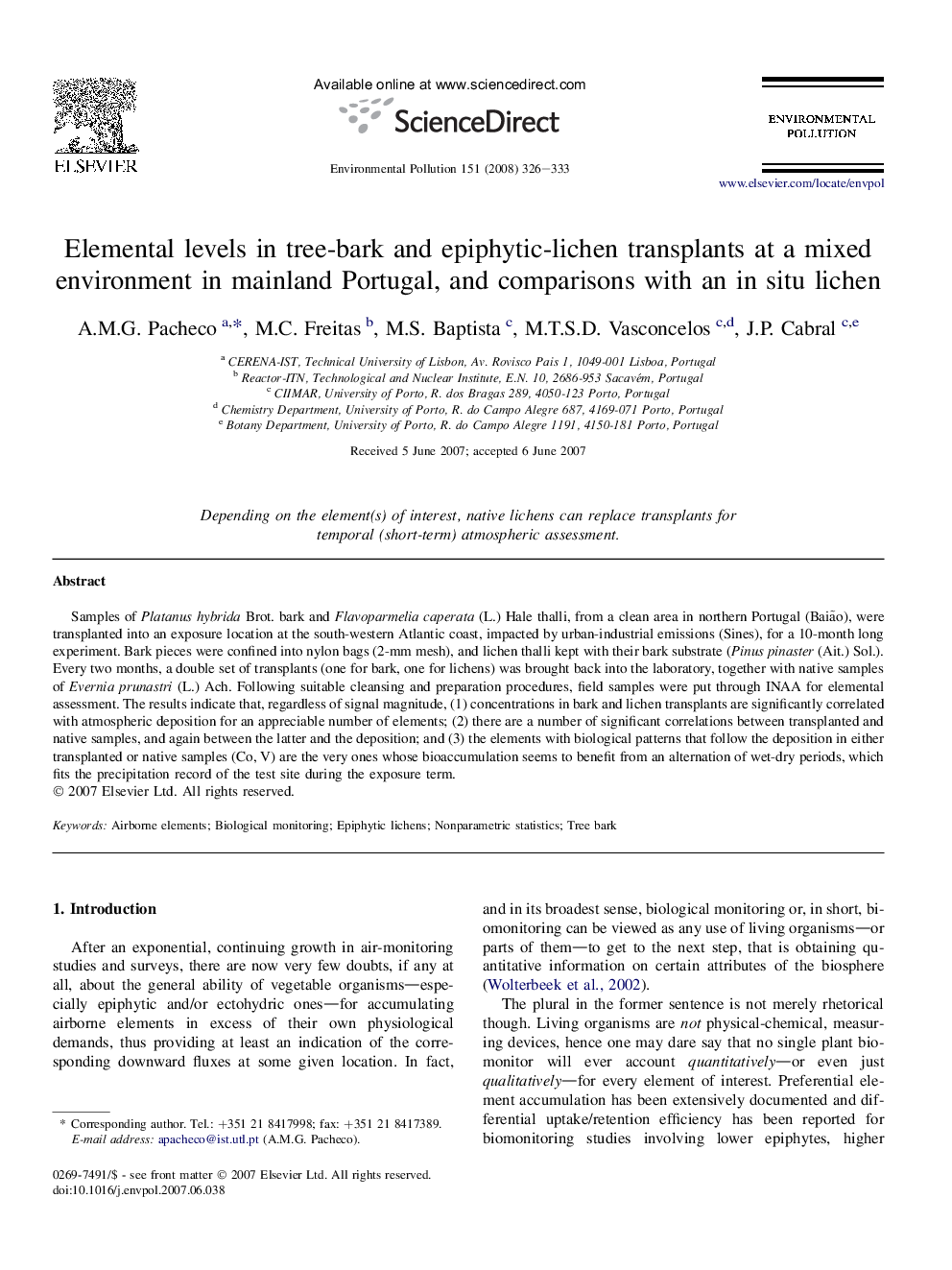| Article ID | Journal | Published Year | Pages | File Type |
|---|---|---|---|---|
| 4427136 | Environmental Pollution | 2008 | 8 Pages |
Samples of Platanus hybrida Brot. bark and Flavoparmelia caperata (L.) Hale thalli, from a clean area in northern Portugal (Baião), were transplanted into an exposure location at the south-western Atlantic coast, impacted by urban-industrial emissions (Sines), for a 10-month long experiment. Bark pieces were confined into nylon bags (2-mm mesh), and lichen thalli kept with their bark substrate (Pinus pinaster (Ait.) Sol.). Every two months, a double set of transplants (one for bark, one for lichens) was brought back into the laboratory, together with native samples of Evernia prunastri (L.) Ach. Following suitable cleansing and preparation procedures, field samples were put through INAA for elemental assessment. The results indicate that, regardless of signal magnitude, (1) concentrations in bark and lichen transplants are significantly correlated with atmospheric deposition for an appreciable number of elements; (2) there are a number of significant correlations between transplanted and native samples, and again between the latter and the deposition; and (3) the elements with biological patterns that follow the deposition in either transplanted or native samples (Co, V) are the very ones whose bioaccumulation seems to benefit from an alternation of wet-dry periods, which fits the precipitation record of the test site during the exposure term.
